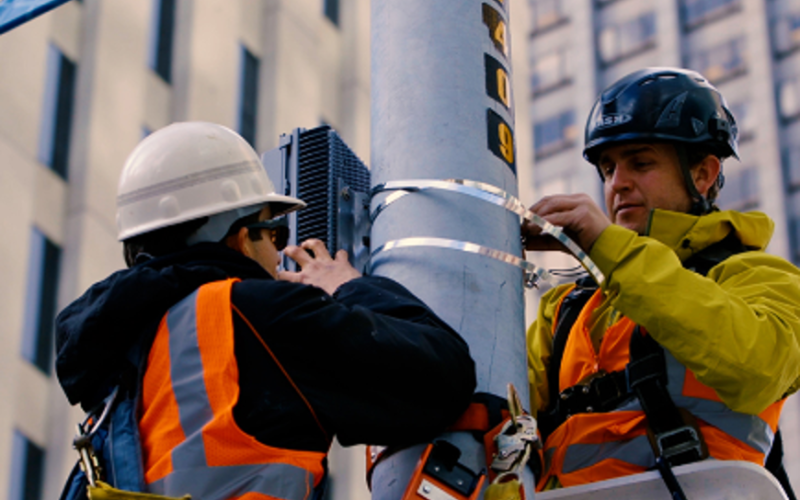Why should I care about 5G?
You’ve probably heard about 5G, but do you know how profoundly it has impacted your life—and how it will continue to change things in the near- and mid- term future? Not only will 5G make your phone connect much faster, but it also has the potential to transform everything from gaming to self-driving cars. Read on to get the whole story.
What is a 5G network?
In simple terms, 5G is the 5th generation of mobile network—a new global wireless standard after the 1G, 2G, 3G, and 4G networks. 5G is designed to connect virtually everyone and everything: machines, objects, and devices. While 3G and 4G networks also connected the world to smartphones, 5G does a better job of supporting the apps and features that make smartphones and other wireless devices so incredible1.
Learn more about AT&T’s 5G network.
Who invented 5G?
The 5G standard (aka the 5G new radio standard) was created in collaboration with the 3rd Generation Partnership Project (3GPP) wireless standards body, wireless carriers such as AT&T1, and other global technology companies.
Is 5G or LTE better?
5G is more advanced and has the potential to be much faster. 4G LTE (Long-term Evolution) is the wireless generation that came before 5G. As 4G advanced, a later version of it was called LTE-A. LTE-A was once the fastest connection available for wireless networks at the time, but faster 5G networks are increasingly popular in many locations. The newest smartphones on the market now feature 5G. So, 4G is becoming less and less relevant.
How fast is 5G?
According to a September 9, 2023, Digital Trends article2, 5G theoretically offers the potential for staggering 10Gbps (gigabits per second) speed. But this speed refers to the maximum total bandwidth available to all 5G devices connected to a single radio transceiver on a cellular tower. The 10Gbps speed is shared across dozens—even hundreds—of devices, so everyone gets the best possible performance. It’s the same on a smaller scale with your home Wi-Fi 6 router. And according to a 2023 OpenSignal marketing survey3, the top 5G download speed clocked in at 186.3 Mbps (megabits per second), and the top 5G upload speed was 17.9 Mbps.
Cellular networks’ connective tissue
All cellular networks send encoded data via radio waves, which have different frequencies divided into bands. Previous generations, like 4G, operated on low- and mid-band frequencies. 5G can operate on low-, mid-, and high-band (also known as millimeter wave) frequencies. Why is this significant? Because lower frequencies can travel farther and penetrate obstacles at relatively low speeds; higher frequencies are much faster but have a limited range and struggle to pass through objects. So, removing 5G’s penetrative limitation is key to opening new technological vistas.
Why is there so much hype about 5G?
Because there’s a lot more to 5G technologies than mobile phones. Very soon, 5G will serve many other devices, and empower even more incredible applications. That will be critical as Internet-connected cars, environmental sensors, thermostats, and many other consumer gadgets and technologies accelerate in coming years.
Why is 5G expected to be so important?
5G has the potential to transform life in numerous ways. The examples above are only the tip of the 5G revolution iceberg. With 5G’s rapid advance as the driver of future wireless networks, science fiction will soon become technological fact. Some examples include:
- Autonomous cars4. 5G technologies will help autonomous cars communicate not only with one another, but also with roads, lights, parking meters, signals, and in other ways.
- Advanced medical applications5. 5G will soon refine the practice of remote surgeries, allowing physicians in one location to manipulate network-connected surgical instruments thousands of miles away. Medical providers will also rely on 5G to rapidly transmit high-resolution images for use in diagnosis and treatment.
- Manufacturing6. Manufacturers will use 5G networks to monitor production lines remotely and maintain video feeds of factory floors, or to feed data to workers wearing augmented reality glasses that superimpose digital information onto the real world. Some companies are licensing their own bit of 5G spectrum and are replacing Wi-Fi networks with private 5G networks.
- Internet of Things (IoT) consumer applications7. Over the past few years, IoT has joined 5G as one of the most important technologies of the 21st century. Now that we link to the Internet via embedded devices, seamless communication is possible between people, processes, and things. With low-cost computing, the cloud, big data, analytics, and mobile technologies, physical things will share and collect data with little human intervention.
As you can see, our future will be driven in large part by 5G and the technologies it empowers. So, buckle up. We’re in for a wild and exciting ride.
This article is AT&T sponsored content written by Robert Rivenbark, an AT&T contractor and a TechBuzz contributor. The statements in this article are his own and don’t necessarily represent the positions, strategies, or opinions of AT&T.
1https://developer.att.com/blog/5g-wireless-network-development
2 https://www.digitaltrends.com/mobile/how-fast-is-5g/
3 https://www.opensignal.com/reports/2023/01/usa/mobile-network-experience-5g
55G technology for healthcare: Features, serviceable pillars, and applications – ScienceDirect





